The fishing line is one of the most important components to a successful day on the water. With so many lines to choose from, a novice angler can become overwhelmed. Luckily for you, Baitshop is here with our favorite lines of 2019. Here they are:
QUICK ANSWER: THE BEST FISHING LINE
[Contents]1OUR TOP PICK
KastKing SuperPower Braided Fishing Line
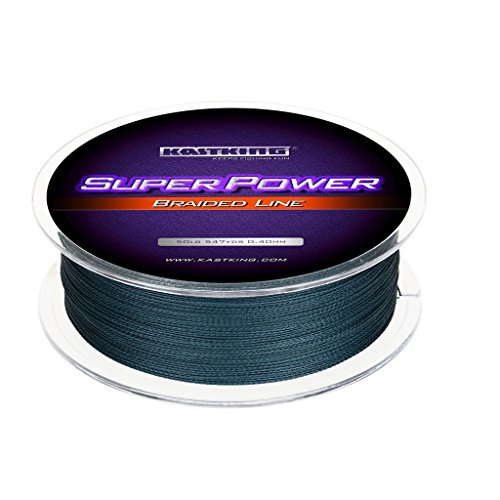
CHECK LATEST PRICE See Customer Owner Feedback >>SUMMARY
This is a braided line from KastKing which ticks all the boxes when it comes to getting a high-quality fishing line. It comes in a large variety of both thickness and length so you are sure to find the perfect solution for whatever you’re looking for.
The line allows you to tie an extremely strong knot and has a low memory which will give you a better chance of achieving better casts that go further with less chance of wind knots. It also has great abrasion resistance to the line will last you for a long time. Its small size for its strength means that you can spool more line onto your reel.
- What Makes This Fishing Line Stand Out
- Braided fishing line
- Abrasion resistance
- A large number of thickness and length options
View More By KastKing »2EDITORS CHOICE
PowerPro Spectra Fiber Braided Fishing Line
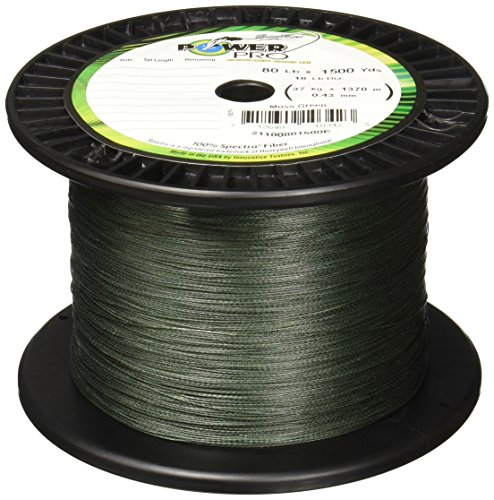
CHECK LATEST PRICE See Customer Owner Feedback >>SUMMARY
This is another braided fishing line, this time from PowerPro which is another fantastic fishing line. It comes in a wide variety of different color options and also comes in a great variety of thickness and weights too which ensures that you will be able to find what you’re looking for.
This line has a high degree of strength so that you’ll never lose that catch and the line is treated with their enhanced body technology which will keep the line round and sensitive. This is perfect for multiple types of fishing and the line can be spooled directly from the box and it has a built-in cutter too.
- What Makes This Fishing Line Stand Out
- Built-in cutter
- A range of color options
- Ultra-strong braided line
View More By PowerPro »3BEST VALUE
Berkley SpiderWire Stealth Superline Fishing Line
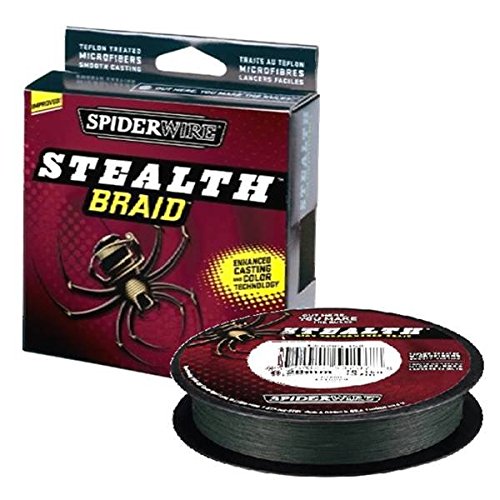
CHECK LATEST PRICE See Customer Owner Feedback >>SUMMARY
Berkley have created a product called SpiderWire which has the menacing tagline of ‘nothing gets away’ which just goes to show how much faith they have in their product. It is a braided line but has Teflon treated microfibers which makes the line incredibly quiet as it flies through the air for a longer cast.
Its rounded shape reduces and backlashes and resists any digging in on the reels. It comes in a great variety of colors as well as lines ranging from 6 to 250 pounds in strength and from 125 to 3000 yards in length as well.
- What Makes This Fishing Line Stand Out
- Teflon treated microfibers
- Perfectly round shape
- A variety of colors, lengths and strengths
View More By Spiderwire »4
Stren High Impact Monofilament Fishing Line
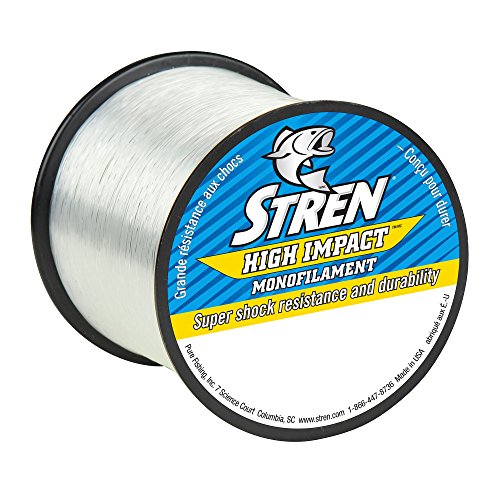
CHECK LATEST PRICE See Customer Owner Feedback >>SUMMARY
This is a monofilament line from Stren which comes in colors of clean, low visibility green, high visibility green and blue as well. It comes in several different sizes which range from 10 to 30 pounds. The line is shock-resistant which will perform perfectly when you are fighting against any gamefish.
It will work well in saltwater without deteriorating. This line is ideal for offshore anglers due to its strength and performance and is suited to many other types of fishing as well. This is a great monofilament line which is sure to suit your needs.
- What Makes This Fishing Line Stand Out
- Four color options
- Monofilament line
- Tough for all conditions
View More By Stren »5
Berkley Trilene Big Game Monofilament Custom Spool Fishing Line
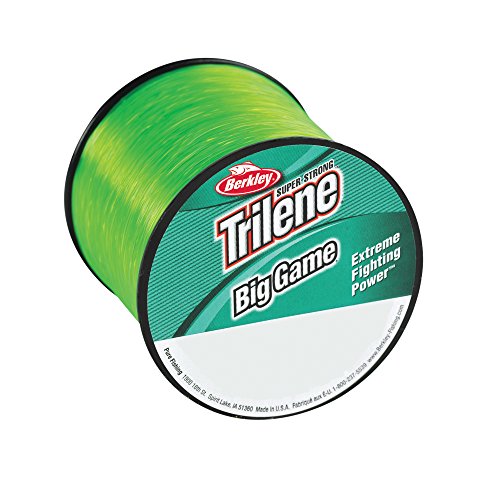
CHECK LATEST PRICE See Customer Owner Feedback >>SUMMARY
This is another monofilament line, this time from Berkley which comes in seven different colors including bright, clear and darker options together with the full range of size options. This is a line that will allow you to fight with the largest fish without fearing missing out on the glory.
The incredible strength will give you a huge amount of confidence in the line which is increased by the lines shock resistance. The monofilament line has abrasion resistance to stop it from ever snapping so you know you’ve got a tough line that won’t let you down.
- What Makes This Fishing Line Stand Out
- Severn different color options
- Shock resistant
- Tough and abrasion resistant
View More By Berkley »6
KastKing DuraBlend Monofilament Leader Fishing Line
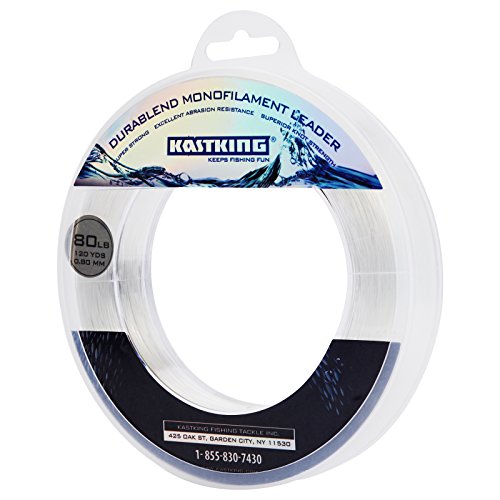
CHECK LATEST PRICE See Customer Owner Feedback >>SUMMARY
This is another line from KastKing but this time it’s a monofilament line which has slightly different qualities. They are a great brand which produces many great fishing products with this line being included. This is a very strong line with a high amount of tensile strength.
The line is durable and abrasion resistant with a low amount of stretch without any imperfections. This will allow you to fight with some of the heaviest fish without ever losing your catch. That strength allows it to be smaller in size to give you more reel capacity.
- What Makes This Fishing Line Stand Out
- Durable and abrasion resistant
- High degree of shock strength
- Low memory characteristics
View More By KastKing »7
South Bend Monofilament Fishing Line
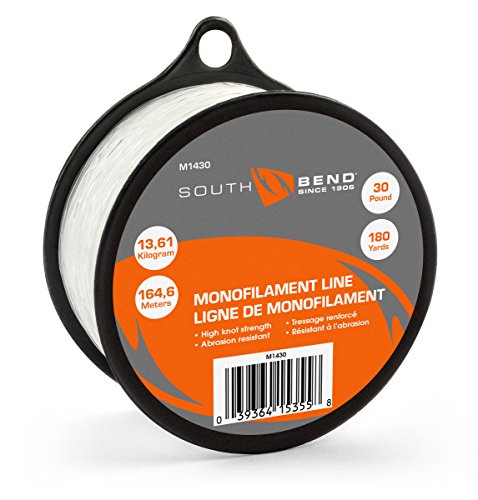
CHECK LATEST PRICE See Customer Owner Feedback >>SUMMARY
South Bend have produced a high-quality monofilament line which will be able to give you the strength that you need. It features a high amount of knot strength so you won’t have any problem keeping them tight and it is also abrasion resistant so you won’t have to worry about the line snapping after a little bit of wear.
It comes in 12 different size options which range from 4 pounds all the way up to 60 pounds so there are plenty of options to choose from. Its narrow diameter will mean that you can get a high amount of line on your spool.
- What Makes This Fishing Line Stand Out
- Monofilament line
- High knot strength
- Abrasion resistant
View More By South Bend »8
Piscifun Braided Fishing Line
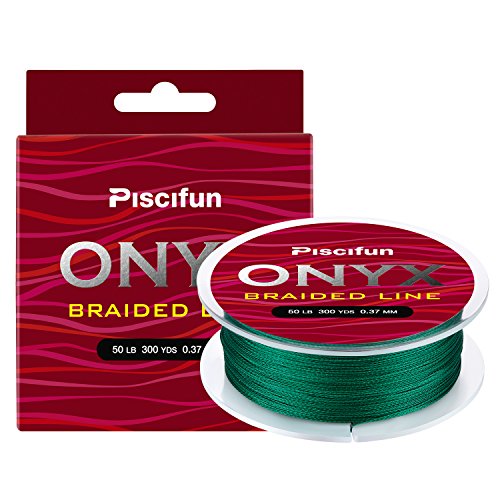
CHECK LATEST PRICE See Customer Owner Feedback >>SUMMARY
Piscifun are another company which offers a high-quality braided fishing line which comes in all the colors and size options that you’d expect. The line has a great degree of abrasion resistance as well as being an extremely durable material.
It has brilliant knot strength to ensure that it will hold tight exactly when you need it to and the line is incredibly smooth and round which will avoid any backlashes which will help your bait reach its target water level faster than ever.
- What Makes This Fishing Line Stand Out
- Sensitive with minimal stretch
- Strong knot strength
- High degree of abrasion resistance
View More By Piscifun »9
American Fishing Wire Tooth Proof Stainless Steel Fishing Line
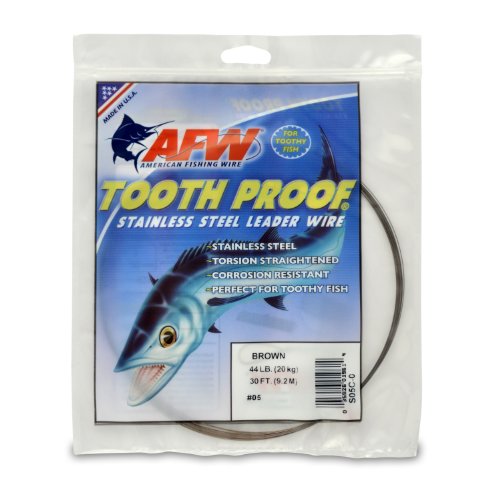
CHECK LATEST PRICE See Customer Owner Feedback >>SUMMARY
This is a high-quality leader wire from American Fishing Wire which will enable you to catch some of the biggest fish in the ocean. It is stainless steel and available in colors of bright or camo brown and its torsion strength is able to eliminate cast which will be able to improve its kink resistance.
The steel string makes it an ideal leader wire for toothy fish as the wire is hard but it’s brittle so it’s not going to break in the fish’s mouth. It’s also abrasion resistance and could easily get you that prize-winning fish.
- What Makes This Fishing Line Stand Out
- Leader wire
- Made from stainless steel
- Hard but not brittle
View More By American Fishing Wire »10
Berkley FireLine Superline Fishing Line
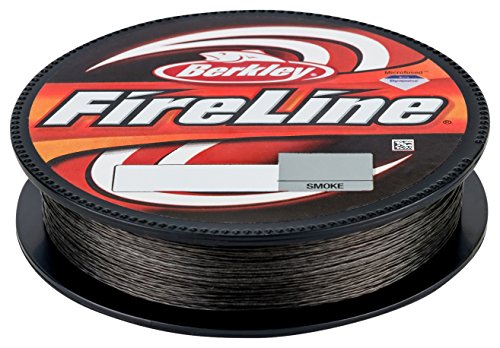
CHECK LATEST PRICE See Customer Owner Feedback >>SUMMARY
Berkley advertises this as a superline and this is because it is micro fused dynamo PE fibers which are 3 to 4 times strong than any mono fiber that is on the market. The build quality gives it incredible durability as well as making sure that is resistant to abrasion.
It comes in all the size options and colors that you’d wish for and it’s easy to handle and will smoothly go on to any spinning reel. The thin diameter will not only mean that you can get a lot on your spool but it will also give you great performance in lure action as well as the line having a low level of visibility.
- What Makes This Fishing Line Stand Out
- Superline construction
- Optimized for spinning reels
- Thin diameter
View More By Berkley »
How To Choose The Best Fishing Line – Buying Guide
Type
There are essentially three types of fishing line that you will need to choose from which all offer different qualities and can all be used for different tasks. Those three main types are braided, fluorocarbon and monofilament. They all have different characteristics which mean that it can be difficult to know which type of line is going to be the best for you, here we will go through the three different types to explain their advantages and why they are used.
Braided – This is the most traditional type of line and has been used for hundreds of years. Of course over the years it has vastly improved in technology to the fine line that we see today but the basic principles still apply of winding string together in order to make an even stronger line.
They used to be made of linen but these days they are made out of synthetic material which will be either dacron, dyneedma or spectra. The material is then braided together which increases their overall strength to leave you with a line that’s not going to snap or let you down. The braided line will be thinner than a monofilament line but is actually much stronger and also highly resistant to abrasion.
The braided line is able to hold onto the weight of some of the heaviest fish as it has a high amount of strength for its size. The line will also be very sensitive as well as it doesn’t have much stretch. This will allow you to instantly feel when there is a bite so you don’t lose any precious time trying to reel your catch in.
The braided line is perfect for something like tog fishing as its lack of stretch won’t allow the fish to sense that a hook is about to be set as there is no delay in the stretching of the line. Its high amount of strength also means that it won’t snap if a fish tries to hide under sharp rocks.
There are downsides though as the line is not very forgiving due to its lack of strength. With heavier fish it can be difficult to set your drag correctly if you’re using a braided line. Another downside is that it has a much higher chance of getting caught within itself when it is cast into the wind on account of its light weight and thin profile.
Monofilament – This is a very different type of line to a braided option and is used for different types of fish. The line is generally just called mono so don’t think it’s a different type of line if you see that named used anywhere. Mono is another word for one, and it’s called as such as it’s made from just one piece of plastic line which is in contrast to the three lines which make up a braided option.
That single line is made to various levels of thickness depending on your needs as the different widths offer an ever-increasing amount of tensile strength. This is one of the cheapest options around as it doesn’t cost a lot to produce so if you’re just starting out in fishing and looking for a budget option then this would be the ideal first choice.
One of the defining qualities of a mono line is that it has a higher level of stretch than a braided line. That can be an advantage or a disadvantage depending on the size of fish that you are wanting to catch. If you’re trying to catch a smaller fish then you might not feel the bite due to the stretch of your fine but if you are trying to catch a bigger fish then this can be very useful as you’ll be able to adjust your drag due to the extra time that the stretch will give you to ensure that you don’t lose the fish.
The monofilament line is also more difficult to see by fish so they are less likely to be scared away. As it’s a cheaper option, you should be able to afford different types of colored line in your fishing equipment so that you’re able to match the color of the water that you’re fishing on. Other advantages of a mono line are its ability to stay on your spool as well as it being less likely to knot when you cast it out.
Fluorocarbon – While there are major differences between braided and monofilament, fluorocarbon and monofilament are very similar as they are made from the same type of materials. Fluorocarbon though is a lot denser which is the biggest difference between the two types of fishing line.
Fluorocarbon also is heavier due to that increased density and had less stretch. That increased size means that it is stronger than mono and able to handle a lot more stress on the line and is a lot less likely to snap due to abrasions that can happen on a fishing line.
One of the big advantages it has is that due to the lack of slack on the line you have less material in the water which will keep it taught so there is less chance of a fish being able to shake off the line as it can do a lot easier if the line is slack. Like mono it is almost invisible to fish in the water and can be bought in numerous colors to match the water that it’s in.
There are downsides to fluorocarbon though as the line can be a lot thicker which can make tying a line difficult, especially in colder conditions. That heaviness can also lead to the line getting caught up in itself as well which can be frustrating though. Due to its qualities it can also be used as a leader for both a monofilament and a braided line.
Strength
If you’re going to be fighting fish at the end of a line then you know that it has to be strong to be able to cope with that. There is nothing more frustrating as a fisherman than then you have that catch at the end of your line which you think might be something special and you lose it. In order to protect against that one of the things you can do is make sure that you get a line that is going to be able to deal with those stresses.
In terms of strength on a line, this is measured on the basis of how much weight it would take to break that line. This is more often than not measured in pounds so if you see a figure of ’40 lb’ then it means that line would be able to lift up 40 pounds of weight before it snapped. This figure will clearly be displayed on any packaging and will be a selectable option when you buy anything online.
The strength you need from your line depends on what type of fish you are looking to catch as obviously the larger the fish, the more pull they’ll be able to exert on the line. Before you rush off to by the strongest line possible it’s important to point out that the stronger the line is, generally the thicker it is, so it’s more likely to be seen by fish when it’s in the water.
There are other considerations when it comes to strength too aside from its ability to lift weight. If there are any additional knots in the line then they can compromise its strength so they should be kept down to a minimum and also your line is going to get weaker over time. Abrasions can compromise the strength of a line which can often go unnoticed and also various elements might degrade it over time so it’s always important to check any line that has been used for a long period of time.
Diameter
Diameter is crucially important when it comes to your finishing line as there are a number of things that it can affect. The most obvious one is visibility as the thicker a line is, the more chance a fish has of seeing it. As we have discussed here though there is a delicate trade-off when it comes to this as you want your line to thin so that it can’t be seen but you also want your line to be thick so that it can hold the weight of any fish that you’re trying to catch. The answer here is that you want to get the thinnest line possible that won’t compromise your chances of losing a catch.
Diameter can also affect the amount of stretch that you have in your fishing line as sometimes you want a line that is going to be a bit more giving so that you can set the correct drag and prevent the shock pull that can happen which can either snap your line or yank the hook out of the fish’s mouth. It can also affect your casting ability as the increase in diameter will result in an increase in weight which can also affect the running depth of your line as well.
Thinner fishing lines are also easier to work with which means that when it comes to tying knots or attaching those lures, having a line with a smaller diameter will make your life easier. In general terms, the diameter of a line is usually a trade-off on numerous fronts. You need to work out what is best for your situation to determine which factors are more important than others.
Stiffness
If you can, stiffness is something that you want to avoid in a fishing line as this is going to make life harder for yourself. There are many things that can affect the stiffness of a line including the material that it is made out of an also things like the temperature can have their effect too.
Perhaps the biggest factor that can determine how stiff a fishing line is though is once again its diameter. As said, the thicker a fishing line then the harder it is to work with but this doesn’t just affect the trying of knots or attaching it to lures, it can also affect the casting as well.
If you want to cast the line out freely so that it can go more accurately to where you want it then you want it to be as flexible as possible. If a fishing line is stiff it could also indicate that it is poor quality or it has been heavily used so if you have a fishing line that you feel might be a little too stiff then it would be a great idea to get it replaced as soon as possible.
Color And Visibility
When it comes to color you want to pick a line that is going to blend in with the water that it is in. There are many different types of color of water but there are also different colors of banks and mud which can affect the visibility that fish can have of your line. Due to this it’s important to know your environment and know which line you should pick at all times. If you pick a line that contrasts against the background then it could spook away any fish when they see the line. Here we will go through the different color types available and how they will affect your catch.
Camo – While camouflage has long been seen as the best material to wear on military clothing, when you’re throwing a line into the water it might not always be the best choice. There are two lines of thinking though when it comes to this color.
The first one being that a change in color along the line will confuse the fish into not thinking there is a line there as some of it will contrast while other parts won’t. The other line of thinking is that the change in color will also prevent any light from passing though the line and illuminating it.
Red – Red is perhaps a curious choice when it comes to a fishing line but there is good thought and a process behind it. When a red line is cast into the water it will quickly turn into a grey or a black color which can have a lot of uses in dark conditions, in most normal conditions though the dark line will contrast in the water which isn’t ideal.
As water is extremely unlikely to be red or black it’s actually the background color which can make this line very useful. You may be fishing in a place that had red mud banks where a red line will be able to blend in perfectly well. A red line though is never the best idea if you’re going to be fishing in shallower waters as the red color will show regardless.
Blue/clear – A line with a light blue color or one that is completely clear is going to blend in well to the water and quite often it can be the line that fish least suspect when it’s cast from your rod. That’s because it will show as the color that fish are the least sensitive too so you have a better chance that they’re not going to be able to see it.
There is though a potential downside to this line though due to the fact that it is much lighter out of the water. Due to it being lighter in color there is more chance that light will be able to pass through it and therefore it could illuminate the line all the way through the water. This would obviously be a huge problem but it is also rare as the sun would have to be shining down the line.
Fluorocarbon – The natural color of fluorocarbon is supposed to be great for fishing as it disappears under water. Of course that’s not the case as it doesn’t just vanish but it can appear very faint to fish. When visible it can show as a slightly white line which would contrast against the water.
It has been shown though that bass have a very hard time picking it up so it’s a great material to work with, it’s a great overall color but for specific conditions sometimes other options work better. While not quite being invisible as some may claim, it is still very hard for fish to pick it up in the water.
Yellow – While you may see yellow (or any other bright color) and wonder why you’d ever think to use that, you would be right. In normal clear conditions it would be pretty senseless to use a yellow line as the fish would be able to easily spot it and therefore avoid it.
If you’re in muddy water though the fish aren’t going to be able to see anything so it doesn’t matter what color the line is. Some fishermen love being able to see their line and watch it move as it gets a bite. For those who like that method then a yellow line can be a great choice but it’s one to be avoided in good conditions.
Resistance From Abrasion
While you may focus on a lines ability to take on a lot of weight there are other factors which can be equally important in making sure that the line doesn’t fail. The main focus will always be the impact that a fishing line will take down its length in making sure no snapping can occur but the impact from the sides can be crucial too.
There are many things in the water that can cause abrasions such as tree branches, rocks that the fish may try to hide in or simply anything below the surface that isn’t water or a fish. When the line comes into contact with any of these things then it will start to wear away at the material. This can either cause it to snap or it will eat away at the material until eventually it fails.
There is not a lot you can do to prevent these things from rubbing on your line and the only thing you can do is make sure that line is highly resistant to such impacts. To do this you need to get the line from a high-quality brand and ensure that they state it under their product features.
If you’re going to be fishing where there is defiantly not going to be any obstructions then this is going to be rare, as even your own inflatable canoe, boat or beginner kayak for example could count as such an obstruction if your line starts rubbing onto it, thankfully the products that we have reviewed here all have a high tolerance to abrasion but it’s something that you need to be looking out for.
Functionality
As we have seen here, there are numerous different factors that can come into play when using a fishing line. Using the right one is vitally important so that you can make the most out of the time you’re out fishing and claim the catches that you were hoping to get.
Without the right line you might not be able to catch anything, even with the best reel and lure in the world. Even if you do catch something, you might not be able to reel it in if you’ve not got the right line. You need to ensure that the line you are getting is going to serve the function that you want it to do and that depends on your circumstances.
Crucial aspects like the stretch, color and diameter can be either advantages or disadvantages depending on the circumstances. Using a thick line with yellow wire might be perfect in one scenario but would be a terrible idea in another. You need to know your surrounding so that the functions of your line can work with you to ensure that you get the most out of your time.
Once you choose the right line then you could see your results dramatically increase. You might have been out there for a long time wondering why you weren’t getting the results that you think you should. The reason could well be that you’ve just not had the right line that can produce the right functionality for your circumstances.
Flexibility
When it comes to fishing lines flexibility is a key issue as you’ll want a line to be as flexible as possible to make the most out of your fishing trip and make life easier for yourself. That is due to a number of reasons including the fact that an increased amount of flexibility means that the line is less likely to have a memory.
Memory in a line is when it will alter to the shape of something else. If you are to bend a paperclip then it will stay in the position that you bent it into which means that it has a high amount of memory. While that is an extreme example, even a small amount of memory can mean that a line can stay with the curl of a reel which can make casting extremely difficult.
Flexibility generally increases as a line gets bigger which can make lines which have a thinner profile while still having the same amount of strength extremely useful. One of the features that you need to look for when it comes to fishing line is for it to be flexible but also having the ability to not permanently alter its shape.
Buoyancy
How buoyant you want a line to be depends on the type of line that you are using and also what type of fishing you want to do. Sometimes buoyancy can be an advantage while at other times it could be seen as a disadvantage.
A fluorocarbon line is heavier and more likely to sink which is ideal for fishing with the likes of jerk baits and the less buoyant line will give you more of a chance of making that catch. A monofilament line though is generally lighter meaning that it’s more likely to float on the surface making it perfect for top water baits.
Of course none of this really matters if you’re using a heavy lure which is going to sink quickly as the line will sink with it. Buoyancy is another one of those aspects that comes into your thinking when you are trying to determine the perfect fishing conditions. There is a lot to think about, but when you get it right, it can produce some great results.
Line Twist
Despite being a constant source of frustration there is not a lot that can be sometimes be done with line twists. It’s one of those things that fishermen have to put up with if they want to be out there doing that they love. There are though lines which are better than others when it comes to their likelihood of twisting.
Monofilament lines will twist more than any other types of line due to the structure and how they are made. Fluorocarbon line will do slightly less so as it is generally a thicker line but if you want the best chance of your line not getting twisted then you need to get a braided line. This will twist from time to time though so you’ll never be able to get away from it completely.
FAQs
Q: How Long Does The Fishing Line Go?
A: The amount of line you can get on your reel depends on the diameter of the line and how big your reel is. The modern-day fishing lines are thinner and stronger than ever before meaning that it can be a long time before you ever need to replace the line on a reel.
When buying fishing line it’s only natural that the thicker the diameter, the less overall length you are going to get on a spool which is important to bear in mind if you are looking for a specific amount of fishing line. Sometimes it can be useful to have multiple lines available depending on different conditions that you are trying to fish in.
In terms of the lifespan of the line this depends on a lot of factors such as the waters that you are fishing in, the type of line that you are using and how often you fish. If you are fishing somewhere that is consistently rubbing on your line like a rocky area then this is obviously not going to last for as long as if you’re fishing in that ocean. If you are fishing in somewhere where abrasions occur then you want to check your line often.
Generally though a fishing line might last for up to three years if you are looking after it and turning it over from time to time to ensure that it is having an even amount of wear. As so often is the case, this can also come down to diameter as well as obviously the thicker a line is, the more likely that it will be able to last for a long time.
Q: Does The Line Sink?
A: Whether a line sinks or not can completely depend on the type of line that you are using and the type of lure that you have. Generally without any weight attached fishing lines are quite buoyant but without anything on the end of the line you’re not going to be going much catching.
If you’re a fly fisherman you might be targeting fish that feed off the surface so in that instance you will want a lure that is going to float on the surface and a line that is not going to weigh it down. With other types of fishing you will want your lure to get to its target destination as quickly as possible so you’d have a heavier lure with a heavier line.
As we have discussed previously, the three different types of line all have different buoyancy qualities. Braided line is the most buoyant due to its light weight, followed by monofilament and finally fluorocarbon being the heaviest of the three. Despite this, clearly the lure will have a much bigger bearing on whether a line will sink or swim than the line will.
Q: Will A Neon Green Color Scare Off The Fish?
A: This depends on the type of water that you’re throwing the line into. If you’re throwing a neon green line into clear blue water on a bright and sunny day then it will most likely scare off the fish and you will struggle to ever find a catch that way.
A lot of waters though can have a green hue where the line will blend in more subtly with the environment. Even still you have to be careful if you are using a bright green line as even then it might be too light and contrast against any darker greens that are in the water.
With any bright colors such as neon green or yellow when are best used by people who want to be able to see their line when they are fishing. If you’re the type of angler who likes to watch their line when you think that you might have a bite, then choosing a bright line would be ideal as this will mean that you can see it clearly.
This though should only be done in muddy waters. In any other circumstances you won’t have any bite to watch was the fish would have already have been scared off by the line. So if you’re not fishing in muddy waters then it’s best to avoid any brighter colors or you could be left disappointed.
Q: Will The Braided Line Deteriorate With Time Like Mono Lines?
A: Everything gets worn over time and that includes every type of fishing line. Despite being very strong, a braided line is not going to last forever and will need to be changed over time. Monofilament lines deteriorate but only very slowly and can still last you for a very long time.
With a fishing line there are many things that will wear it down over time. One of them is the environment that they will be in, especially if they are in saltwater. Another is just the general stretching and usage that it will get as it moves around the reel, through your rod and against anything that it might touch. Another thing that can deteriorate a line is the natural abrasions that can happen underwater from numerous sources.
No-one is impervious from the wearing down over time but braided lines do have an impressive amount of resistance to everything that can be thrown at it. The reality is that if you choose a line from a reputable brand that is well-made then it will last you for a very long time, regardless of whether it is braided or a monofilament line.
Q: What Is The Best Color For A Fishing Line?
A: There is no one best color for a fishing line as this is massively dependent on the conditions that you are fishing in. You might be the type that only does one type of fishing and always in one type of environment so there will be less of a need to worry about having multiple line colors as you can have one and stick with it.
The general principle is that you want to match the environment that you are in. In normal circumstances you will most likely want to opt for a blue, clear or fluorocarbon line as there are the types with are less likely to be seen by any fish that are swimming in the water. Blue line is good when the water has a slightly blue hue to it as it will blend into the water.
The advantages of a clear line is obvious as it tries to be invisible in the water but obviously it’s not perfectly see through so will still be able to reflect some light away from it which means it can still remain slightly visible. There is also the potential of light shining down and illuminating it which is obviously not ideal.
Fluorocarbon is loved by many due to its magical qualities of invisibility. It’s said that the line will be able to completely blend into the water and become invisible to fish. While this is almost true, as with the three most used options it is still barely visible under some circumstances so there is not one line that is completely foolproof.
There are other options too, a red line is available which can be good for night fishing or if you’re fishing somewhere that has red clay banks. All lines though will appear darker the longer that they stay in the water and after a short period of time a red line will look black to a fish which can sometimes contrast against the color of the water.
There is another option as well as there are a number of brighter lines available with some being marketed as neon or fluorescent. These lines are great for fishing in murky waters where the fish wouldn’t be able to see any line, regardless of what color it was. These are ideal for people who want to watch the line but the brightness of the line increases the chances of a fish seeing it so that is the risk that you take.
So therefore there is no one clear answer on which color is best for you so it’s simply of case of looking at your surroundings and judging what color matches them. If you do that then you have the highest chance of the fish not being able to spot your line and therefore a greater chance of you making the catch you want.
Q: What Does Limit Of Elastic Elongation, Elongation At Fracture And Minimal Load Elongation Mean?
A: Elastic elongation is the length at which a line will stretch before it can return to its original length. If it’s stretched more than this then it will no longer be able to return to its original length and would have lost its stretch.
Elongation at fracture is the point at which the line has stretched too much and it then snaps. This is usually expressed as a percentage and is a line goes beyond this point then there is no way back and the line would have failed.
Minimal load elongation determines how the line is stretched when it only has to deal with a small number of loads. This will affect the feedback that the fisherman will be able to feel on their line so it can be important for those who love to feel their catch.
Q: What Do Sensitivity And Feedback Mean?
A: While two aspects which are given the most attention are the road and the lure, the line in between is vitally important and can effectively act as telephone cable in that you are getting information down the line which you can then react to. Some lines are better at sending this information down the line than other which can make it harder or easier to deal with the catch that is at the end of the line.
Obviously you want this to be giving you as much information as possible as it will help you make decisive actions. It can help feeling how the spinner is running one the rod and it will also give you the earliest indication that you have a bite, even if it’s a small one. Looking for lines that have a high amount of feedback would be an ideal choice.
Q: What Does Line Memory Mean?
A: The memory of an object is its ability to revert back to the shape that it was in. This could mean that if your line has been on a spool then it could come off the spool in the same shaped loop as it was on the spool. This is not ideal as you want the line to do whatever you want it to do and you want it to revert back to the straight shape that it was made as.
If your line has developed a curve then this can be partially solved by stretching out the line in order to try and get rid of the curve. If the line has started to deform then it might be the best time to throw it away and purchase a new line. The top brands prevent this from happening to ensure that you are left with a perfectly usable fishing line time and time again.
Globo Surf Overview
There is clearly a lot of information to take in when it comes to fishing lines and how they will perform under their respective conditions. While it can seem like a lot of information to take in, it’s important to have that knowledge in your locker so when specific conditions come in you’ll know exactly what to do and what fishing line that you should be using.
Getting all your fishing gear together can be exciting and people can spend a long time trying to pick out the best reel for them and they can also spend a lot of time checking out which rod is going to be the best thing for them. Once you have got those sorted then you might think about what type of tackle box you should be taking or whether or not you need a backpack or not.
It’s crucially important though not to overlook your fishing line as making a mistake could mean that your fishing trip is ruined and getting all that top gear has all been for nothing. Reading through this buying guide again before you make your choice might be wise to ensure that you’re taking the correct option.
Getting the strongest fishing line you can makes sense and thankfully we have looked out for the best products on the market. While you look through them and see which the best is for you, you can rest assured that they are all quality products which will do a great job for you when the time comes.
When it comes to fishing lines it’s important to know the differences between the main three options. Braided is known to be the strongest as this consists of three very fine fibers which are wound together to make one very strong material. It has high knot strength and is the ideal choice for many deep sea fishermen. It also lacks a lot of stretch either and is extremely strong.
Monofilament is the most popular type of line which is in large part because it’s the cheapest as it has low production costs. This is a singular piece of plastic and it less prone to strikes and also has a very good spool memory which is not ideal. It is though still a very strong line as is fluorocarbon which is slightly thicker but has the added advantage of being very hard to spot in water for fish which makes it perfect for clear waters.
Aside from that you want to be sure that you buy a strong line which has a diameter which reflects your fishing your needs. While thicker lines are stronger they are also more difficult to work with and easier for fish to spot in the water so you should use the thinnest line you can. The color of your line should match the environment that you’re in and it needs to provide you with the functions that you need for your specific fishing adventures.
When you’ve finally got your head around all the different features, you’ll then be able to relax and cast out your line with full confidence that your line is going to give you the best possible chance of catching the fish that you are looking for. When it does you’ll be able to celebrate your prize and get your reward for putting in all that hard work in finding the knowledge to get the best equipment out there on the market.
The credit of this awesome list goes to Globo Surf https://www.globosurfer.com/best-fishing-lines/





